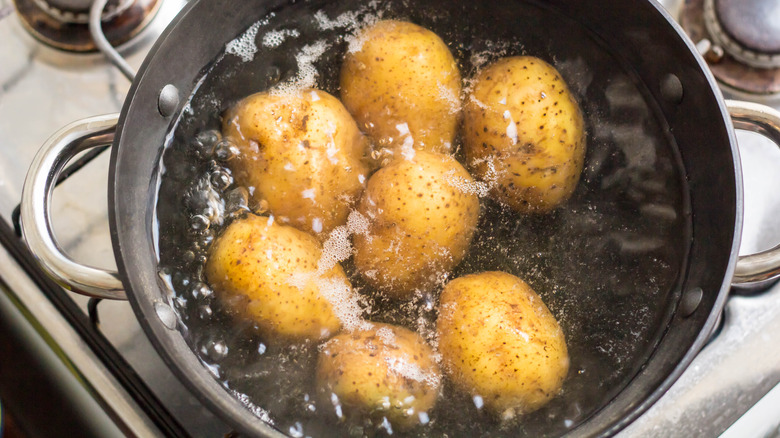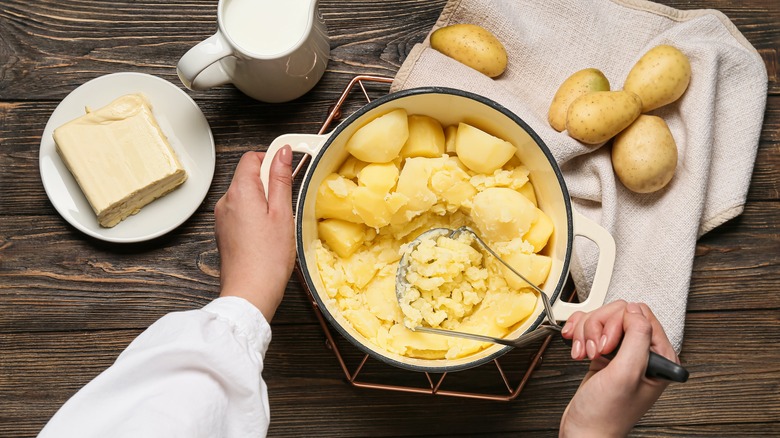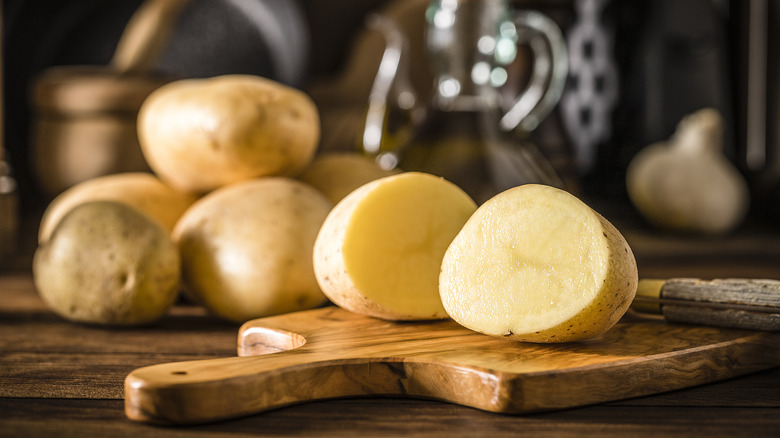The Best (And Worst) Kinds Of Potatoes For Boiling
There are over 200 types of potatoes sold in American grocery stores, and it would be a crime against cooking to assume that they can all be cooked the same way — especially when it comes to boiling.
Generally speaking, potatoes can be divided into three categories: waxy, starchy, and all-purpose, which serves as a sort of middle ground between the first two categories. Waxy potatoes are typically regarded as the best for boiling. Because they contain less starch and more moisture, they absorb less water and maintain their shape and flavor more effectively. Common waxy potatoes include red potatoes (like red bliss), new potatoes, and Russian banana fingerlings.
All-purpose spuds, such as Yukon Golds and purple potatoes, are deemed okay for boiling. While they contain more starch than waxy varieties, they will absorb some water but still retain their shape to an acceptable degree.
Starchy varieties are the least suitable for boiling. With their high starch content and low moisture levels, they're prone to soaking up water and potentially falling apart during boiling. Russet and Idaho potatoes are the key players in this category.
The guidelines differ for mashed potatoes
If you're boiling your spuds to make mashed potatoes, the guidelines differ somewhat. You'll want to steer clear of waxy varieties like red potatoes, as they tend to produce a lumpy rather than silky-smooth mash. Instead, opt for all-purpose or starchy potatoes. The best choice hinges on personal preference, as starchy potatoes like russets can create a creamier, lighter mash, but they also run the risk of absorbing more water during boiling — especially if you chop them beforehand. Exercise caution not to over-mash them, as they can become gluey.
Arguably, a safer bet for mashed potatoes is an all-purpose variety like Yukon Gold. These absorb less water during boiling and result in a heavier, richer mash. This texture is ideal for some taste preferences, but if you're aiming for the fluffiest possible end product, you might still want to opt for starchy varieties — or even consider using a mix of potato types.
Should you boil potatoes whole?
If you're dealing with large potatoes, chances are you'll want to cut them into chunks before boiling to expedite the cooking process. However, if you decide to chop your spuds up, pay attention to the specific type you're using. The starchier the potato, the more important it is to leave it whole.
For high-starch varieties like russet potatoes, it's generally best to avoid boiling them altogether. If you have no other option, boil them whole and leave the skin on — no peeling allowed. This approach minimizes water absorption due to the potato's starch content, which could otherwise lead to an unpleasantly mushy end product. The skin acts as a barrier between the hot water and the potato, reducing the risk of a disintegrating potato disaster.
In contrast, chopping waxy varieties like red potatoes before boiling is less of an issue, as they are not prone to absorbing much water (though it's still best to ensure the chopped pieces are of uniform size). This characteristic makes waxy potatoes a good choice for dishes like potato salad, where you can cut them into smaller pieces for boiling without the risk of ending up with a sloppy mess.



